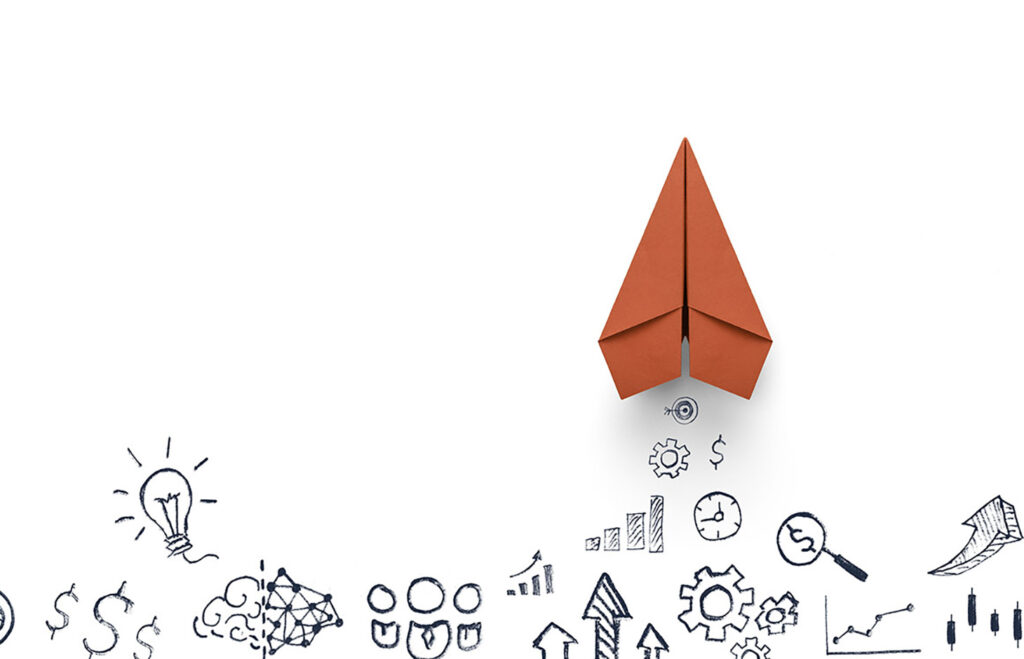You’re a startup. Your budget is tight, your operation, small. Your clients, few. Billing is handled efficiently and accurately by a handful of people who track account data, send invoices, process payments, and still have time for other tasks.
But then, your business doubles. It triples. It quadruples. Your billing department does not.
Manual billing or using legacy billing software makes sense until it doesn’t. Modern SaaS billing is made easy by automated platforms that send invoices and perform a whole host of other features without overworking your staff. Businesses that wish to stay competitive and agile can automate their SaaS billing to see a wide range of new benefits.
1. The billing process becomes a lot more efficient
SaaS billing immediately becomes more efficient when recurring payments are automated. Thriving subscription businesses can quickly sign up dozens of accounts in the startup phase. And that number can grow much, much bigger over time.
The average public SaaS business has 35,000 customers. While this range might be beyond the experience of most companies, the fact remains: the more you grow, the harder it becomes to handle invoicing by hand.
Consider the case of HR software solution JustLogin, which increased productivity 90% after switching to automated billing.
As the business swelled, JustLogin quickly found its invoicing process had become significantly more complicated compared to its days as a startup. Monthly billing alone took two weeks to accomplish. But after switching to an automated SaaS billing solution the business was able to cut the entire process down to just a few hours each month.
2. Revenue leaks are magically plugged
It’s been estimated businesses leak up to 5% of their revenue, meaning they lose money to avoidable scenarios like human error, software limitations, delinquent payments, and so on.
One of the ways a dependable SaaS billing platform staves off leakage is by significantly improving dunning management efforts.
Not only can subscription billing software automate dunning communications through text and email but it can also generate detailed accounts receivable reports, while also performing other tasks like credit card retries to recover failed payments.
Subscription billing platforms can also pro-rate accounts that sign up in the middle of a billing term—ensuring that you are being fairly compensated for your product the moment a new client signs on. Manual proration at scale is a difficult, error-prone task. Businesses with subpar billing systems make manual calculations for every account they sign up mid-month or, skip proration altogether and forfeit money they’ve earned.
Construction software provider CoConstruct was able to recover $2000 a month in leaking revenue simply by switching to an automated billing platform, thanks in large part to its dunning management features.
Even minor instances of revenue leakage are as unfortunate as they are unnecessary. With the right software, costly mistakes can be reduced, or even avoided entirely.
3. Changes in pricing are quick and easy
The vast majority of SaaS businesses change prices at least once a year, with some adjusting their rates considerably more often. The ability to tweak your pricing plans at will is a requisite of doing business in a fast-paced, crowded marketplace.
Unfortunately, tweaking your pricing model with a legacy system isn’t the simple affair it should be. For a business with hundreds of customers, manual price lifts can be a draining experience that is sometimes forgone entirely. When it’s performed, the risk of error emerges, and from that, the possibility of leakage and churn.
Automated billing solutions make it easy to update your pricing plans in real-time, either with sweeping adjustments that impact everyone or at the customer level.
This feature also lends naturally well to your go-to-market process. With a good automated billing platform, you can effortlessly update your catalog, allowing your new offerings to hit the market without delay.
4. Your financial audit trail becomes cleaner
Subscription services the world over are all too well-acquainted with the complications of proper revenue recognition. In fact, nearly 90% of recently-surveyed businesses reported having significant difficulty meeting current financial disclosure standards for proper revenue recognition.
Difficult or not, revenue recognition is mandatory and a failure to comply can carry stiff penalties, both from the SEC and in the court of public opinion. Indeed, 60% of businesses recently investigated for fraud could list inaccurately recognized revenue as one of their transgressions.
Ledger-backed recurring billing software helps automate the revenue recognition process, making it significantly easier to properly recognize the revenue from all of your subscriptions as it earned in real-time throughout the month.
5. Sales and marketing can better tailor messaging to your ideal customer
While all customers are valuable, some are truly ideal for your business and your product. In fact, as little as 20% of your customers could potentially account for up to 80% of your revenue. The more customers you can find that fit your ideal profile, the more revenue you will ultimately be able to generate in the form of account upgrades and upsells.
Your recurring billing software naturally generates a significant amount of customer data. This information can help your sales teams identify what types of customers are getting the most value out of your product by indicating which industries and businesses sizes use your software the most.
6. The customer experience improves
It would be difficult to overstate the importance of customer experience for modern SaaS companies. Recent studies on a variety of B2B companies show investments in CX can produce an ROI of 100%. SaaS companies that take advantage of an automated recurring platform treat their customers to a pleasant experience by sending accurate bills on time every month.
Combined with other customer success efforts, this works to ensure that your customers will be more likely to say ‘yes’ the next time they’re asked to renew their subscriptions. As CEO and writer Kerry Bodine puts it, “Exceptional customer experiences are the only sustainable platform for competitive differentiation.”
Automated SaaS billing: A simple change with serious results
Strong as the recurring revenue industry is, a company is only as successful as it is able to accept payments. Recurring revenue businesses with the right subscription management platform behind them are quicker and more accurate than their competitors still bogged down by legacy systems or manual processes.
Not only does a good billing system make it easier to collect payments, but it also helps with revenue recognition, dunning management, and scalability. In business, few other changes can boast such a potent impact.
FAQs about Automating SaaS Billing
Q: What are the advantages of automating SaaS billing?
Automating SaaS billing increases efficiency, eliminates errors related to pricing, invoicing, and dunning management, optimises recurring payments, and enhances overall revenue management. This aids in maintaining a consistent and accurate billing process while saving significant time and resources.
Q: Can automated SaaS billing help with managing growth in customer base?
Yes, automated billing platforms can handle an increase in customer volume without overloading your staff or causing invoicing errors. This allows businesses to scale their customer base effectively, without worrying about the intricacy of manual invoicing.
Q: How do automated SaaS billing platforms reduce revenue leaks?
Automated billing solutions lower revenue leaks by eliminating human error, handling software limitations, and managing delinquent payments more efficiently. Advanced features like automated dunning communications, detailed accounts receivable reports, and credit card retries to cover failed payments minimize the chances of revenue leakage.
Q: How does automated SaaS billing assist with updating pricing plans?
Automated billing allows businesses to tweak their pricing plans effortlessly, even in real-time. You can make sweeping adjustments that impact all customers or make changes specific to the customer level. This feature also makes updating your product catalog easier, letting new offerings hit the market without delay.
Q: What role does recurring billing software play in revenue recognition?
Ledger-backed recurring billing software automates the revenue recognition process, making it easier to recognize the revenue from all your subscriptions as it is earned in real-time throughout the month. This is essential as accurate revenue recognition is mandatory for businesses and non-compliance can lead to severe penalties.
Q: How does automating SaaS billing enhance customer experience?
Automated billing platforms ensure accurate and timely bills, contributing to a pleasant customer experience. Coupled with other customer success efforts, this can increase the likelihood of customers renewing their subscriptions, which is crucial for maintaining a solid, loyal customer base.
Q: Does automated SaaS billing support the identification of ideal customer profiles?
Yes. Recurring billing software generates a significant amount of customer data, which can help sales teams identify which types of customers get the most value out of your product. This thereby aids in the identification of ideal customer profiles.
Q: Which are some of the popular SaaS Billing & Invoicing Software?
Popular SaaS billing and invoicing software include Stripe, Zoho Subscriptions, Scoro, and Stax Bill. These enable businesses to automate billings, support a variety of payment methods, setup automation for custom invoicing systems, and compile well-structured invoices.
Q: What are some of the common challenges in SaaS billing that can be resolved by automation?
Automation can resolve challenges such as complex invoicing, inefficient handling of recurring payments, inefficient management of dunning communications, difficulties in updating pricing models, struggles with accurate revenue recognition, and identifying ideal customers for targeted marketing.
Q: What is the impact of an automated billing system on the overall performance of a SaaS business?
An automated billing system can significantly enhance the performance of a SaaS business. It allows for efficient resource allocation, improved customer experience, enhanced revenue management, and easier scalability. It also ensures that businesses stay competitive by reducing errors and increasing overall efficiency.








